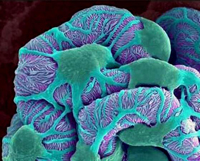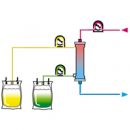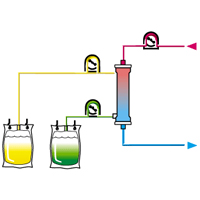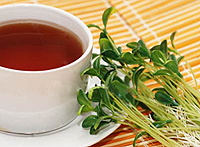Take care of health. Because it is from childhood that the dysmetabolic nephropathy is most often originated and if the content of oxalates in the urine is not «tie» On time, after a few years there will have to be treated with urolithiasis and pyelonephritis.
Content
Oxalates in the urine - diagnosis common
Dysmetabolic nephropathy comes from childhood
Treatment of oxaluria
Medical diet
Oxalates in the urine - diagnosis common
Oxalables in the urine. This inscription, casually written from hand, many have seen in urine test results. Few attaching importance. If, when conducting several repeated tests, the resistant selection of calcium oxalate (oxaluria) is detected from the urine crystals; it is worth thinking about a more complete examination, as this may be the first sign of serious renal impairment. Most often oxalates appear in the urine with a diet rich sorval salts. But there are a sufficiently large number of people who have a sign of a congenital disruption of the exchange of oxalic acid.
This disease, the full name of which sounds quite intricate - dysmetabolic nephropathy, is most often manifested by inflammatory diseases of the kidneys and urolithiasis. Disorder is associated with a disorder of the selection by the kidneys of substances that are maintained in the norm of salt of oxalic acid (oxalates) in a dissolved state.
Dysmetabolic nephropathy comes from childhood

Specific features in the disease no. It is especially common in childhood when children with periodic abdominal pains and signs of skin allergies are treated from worms, dysbacteriosis and T.NS., But do not pay attention to the presence of oxalates in general urine analysis. In favor of this diagnosis, the presence in the pedigree cases of urolithiasis, metabolic disorders, heart disease, digestive tract. Urine has a rich color, often the daily volume is reduced. The disease is manifested at any age, but it happens more often at the age of 6 - 7 years and 10 - 14 years. In parallel, the disease of the biliary tract, vegetative-vascular dystonia. When progressing the disease, glomerulonephritis can develop, but more often it is necessary to meet with the addition of infection and the development of secondary pyelonephritis.
Sometimes the disease is found randomly and with a timely manner of treatment be favorably. Treatment of oxaluria without compliance with a certain food regime does not give positive results. This is due to the fact that the food can flow large, sometimes even excessive amounts of oxalic acid.
In adults, the disease, as such, do not detect, due to the low alertness of doctors, and treat its consequences - urolithiasis, pyelonephritis.
Treatment is based on the use of therapeutic nutrition. When constructing a dietary diet for patients with oxaluria, it should be remembered that the introduction of food rich foods rich in food increases the selection of oxalate with urine. Therefore, from the diet exclude products with excessive content of oxalic acid and its salts: sorrel, spinach, beets, beans, rhubarb, figs, parsley, plums, strawberries, gooseberries, tea, cocoa, chocolate. The source of formation of oxalic acid may be gelatin due to the content of glycocol in it.
Apples, pears, quince, pear leaves, grapes, black currants (in the form of a decoction) contribute to oxalates from the body. Ramars cooked on the peel of fruit, also enhance the separation of oxalic acid from the body. In order to alkaline the body and eliminate the deficit of potassium and magnesium, a large number of unsweetened fruits and dried fruits (pears, prunes, kuragi) are introduced.
MembraneTabizers and antioxidants are recommended from drugs. Potassium and magnesium salts, retinol, tocopherol acetate, podoxin, which is used in a dose of 0.02 - 0.04 g. Supports for 10 - 30 days with a break at 2 - 4 weeks for many months.

Recommended: White bread, pork fat, vegetable and butter, sour cream, potatoes, color and white cabbage and other vegetables (lentils, peas, green peas, repa, asparagus, cucumbers), milk, cottage cheese, eggs, fermented food, cheese, Vegetarian Soups (from the resolved vegetables and fruits), meat, fish and a bird in boiled form in unlimited quantities, dishes from cereals and dough, cabbage, apples, pears, apricots, peaches, grapes, dogwood, quince.
Severally limited in the diet. Clamp salt and carbohydrates. During the exacerbation of the disease, it is necessary to limit the use of milk and dairy products containing a significant amount of calcium.
It is necessary to increase the daily volume of the liquid (up to 2 l per day together with the juices of fresh vegetables and fruits), including the late evening hours, it will warn the crystallization of salts in the urine. A positive effect on the course of the disease is the weak-mineralized mineral water like Naftusi, Essentuki No. 20 (recommended by the course for 3 to 4 weeks, followed by 3-4 month breaks).
The diet should be observed every 2 - 3 weeks at an interval of 3 to 4 weeks, during which a diet is recommended with a limitation of carbohydrates up to 300 g.











